20140306 Gaia manoeuvre observed - Gaia
Ground-Based observations of gaia Manoeuvre |
|
|
Following a call by Stefan Jordan and Martin Altmann (University of Heidelberg) for Earth-bound observations to improve the prediction of Gaia's brightness under different viewing conditions, astronomers from around the world have submitted images and movies showing the change of Gaia's solar aspect angle and the resulting change in brightness on 26/27 February. The manoeuvre was part of the tests used to diagnose the stray light issue noticed in the first few month of instrument commissioning. |
|
| Peter Veres, Bryce Bolin and David Tholen, Mount Kilauea, Hawaii | |
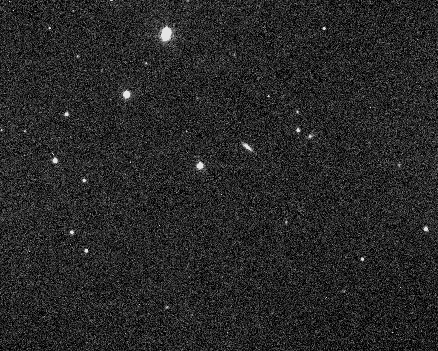 |
|
| Images obtained with the 2.24 m telescope on Mount Kilauea. The video shows Gaia's slew back from a Sun-pointing solar aspect angle to 45 degrees. The spacecraft gets fainter by more than a factor of 100 within less than eight minutes. An article about the movie is available on the ESA Gaia blog. | |
| Kike Herrero Casas, Observatori Astronómic de les Planes del Son | |
| Movie based on a sequence of 120x40 sec exposures taken with the 40 cm telescope at Observatori Astronómic de les Planes del Son (IAU/MPC C29). Gaia can be seen on the lower right-hand side and is quickly moving upwards. | |
| Martin Fiedler, Radebeul, Germany | |
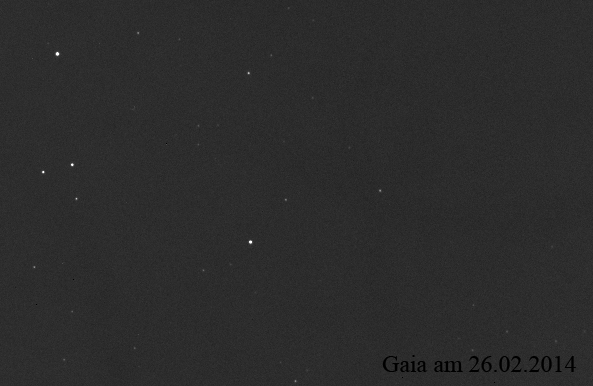 |
|
| Settings: 355/1601mm Maksutov Newton, ST10XME 2bin, no Filter, 300s/Exposure. Gaia can be seen in the centre of the image, moving to the right. | |
| M. Masek, M. Prouza et al., Liberec, Czech Republic | |
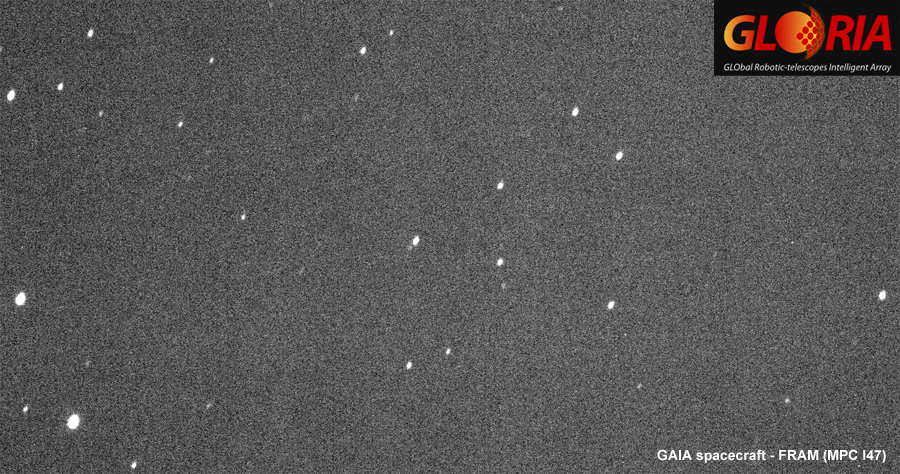 |
|
| Images taken with the 0.3m f/10 FRAM reflector in Argentina. The spacecraft can be seen to the right of the centre of the image, moving upwards. | |
| David Wiggins, Toeele, Utah | |
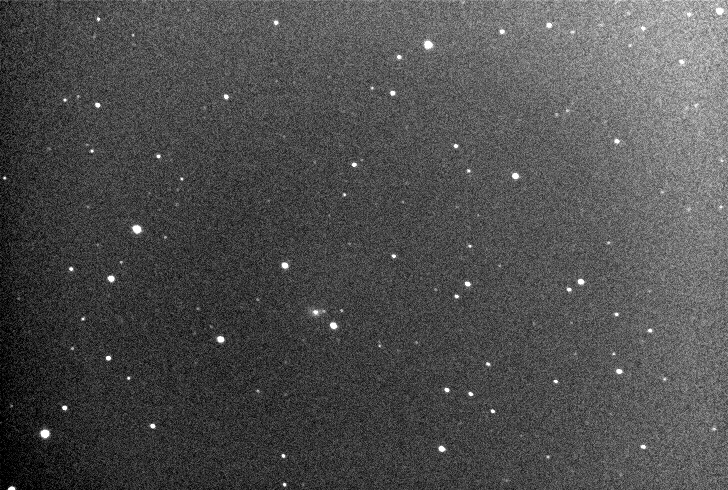 |
|
| Telescope and settings: 35cm Celestron C-14 operating at F/5.5 and a SBIG ST-10XME binned 3x3, clear filter. 6 Gaia images taken at 5 minute intervals between 1227 and 1252 UT on 26 February 2014. Exposure: 60s. FOV: about 18x28 arc minutes. The relatively bright star (mag 14.1) just to the lower left of the center is GSC 1413:453 located at 09h 46m 32s +17° 33' 43". North is up, east is left. | |
| Denis Denisenko, MASTER-Tunka robotic telescope | |
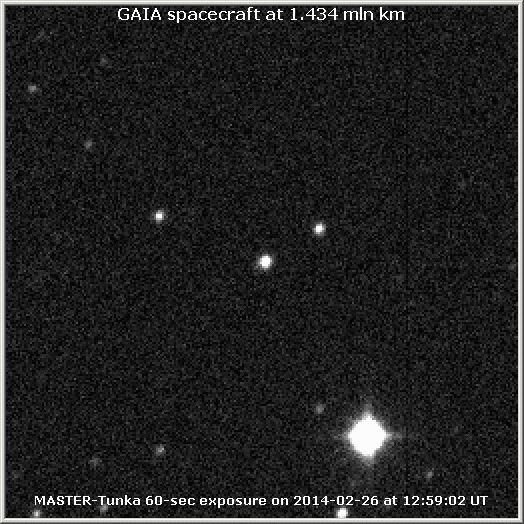 |
|
| Images taken with the MASTER-Tunka robotic telescope (0.40-m f/2.5 reflector + 4kx4k CCD). Gaia can be seen in the centre of the image. | |
| Cristovao Jaques, SONEAR Observatory, Oliveira (Minas Gerais), Brazil | |
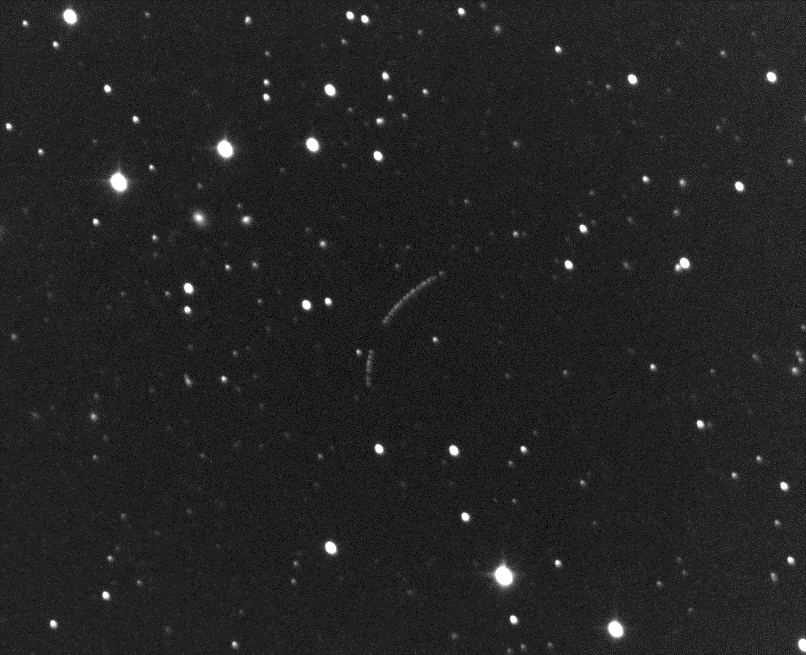 |
|
| telescope: 475 mm (18"). During the long exposure Gaia moved against the background of the stars and is seen as a curved, dotted line. | |
| Arto Oksanen, San Pedro de Atacama | |
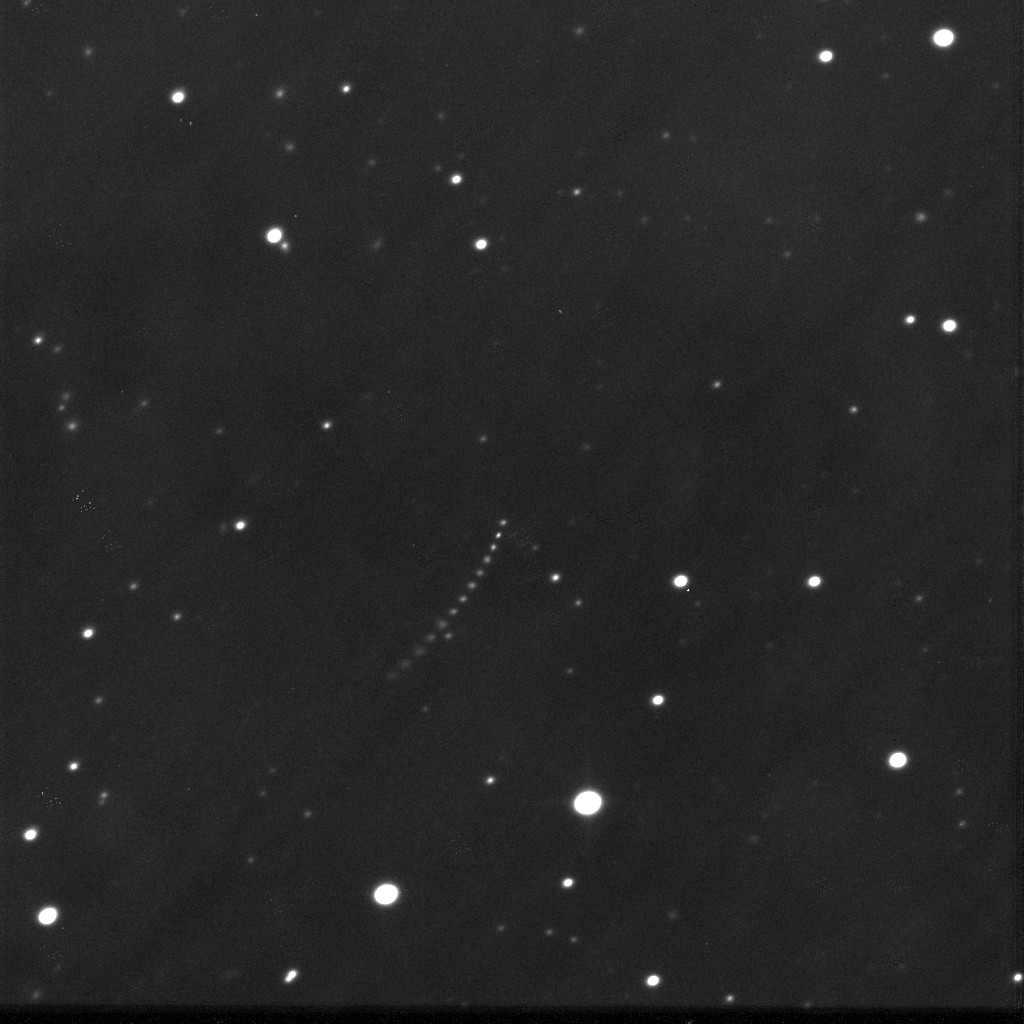 |
|
| coordinates: 68d 10' 48" W 22d 57' 10" S, altitude 2400m. Gaia is the curved, dotted line in the centre. | |
| Paul Volman, Heerhugowaard, Netherlands | |
| Ritchey-Chretien RC8, 203mm F8 f=1624mm. The camera is a QSI 583wsg. Filter = L | |
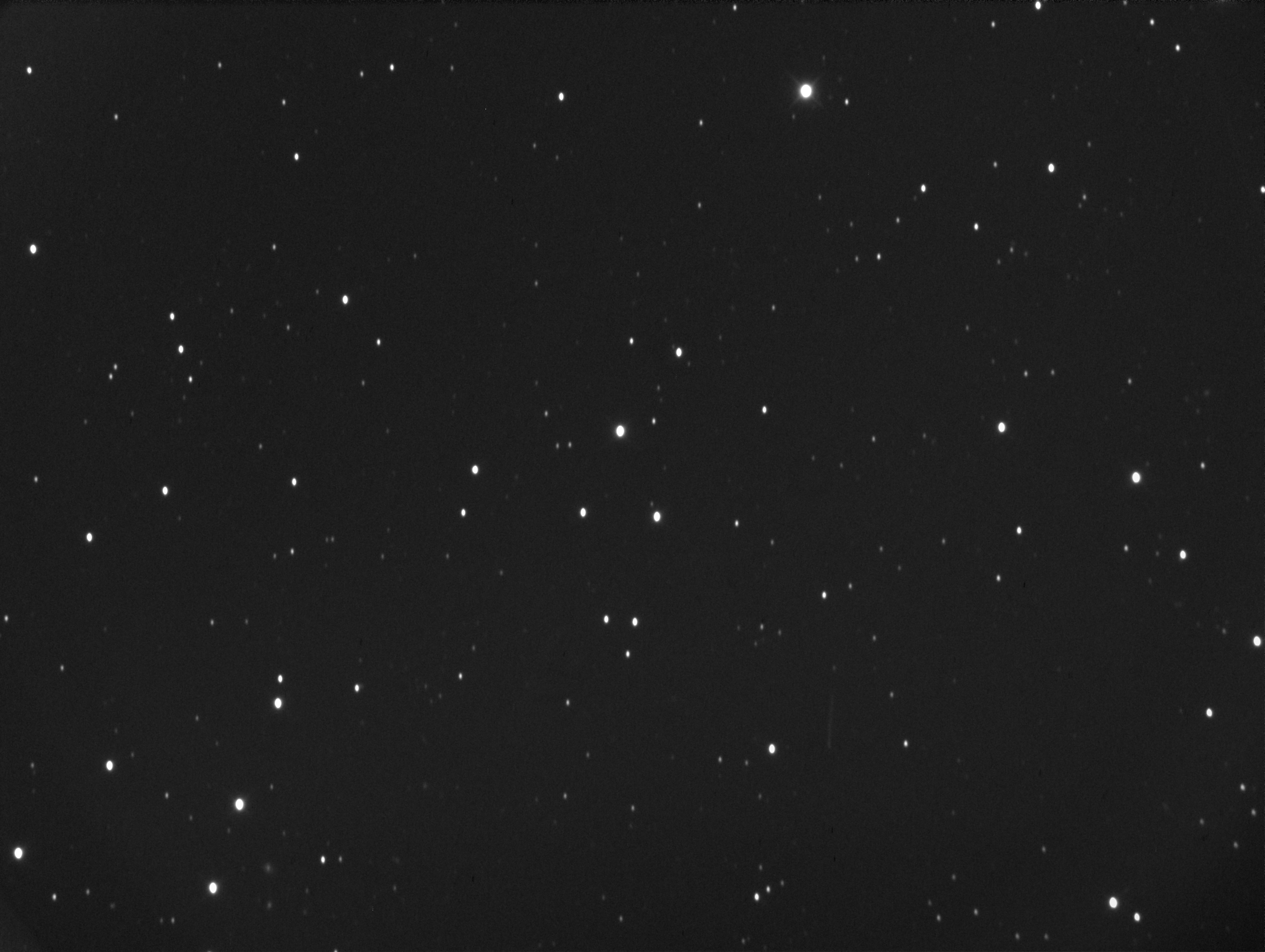 |
|
| First image: binning 1x1, 19 subs of 300 sec each, Date: 2014-02-26 Time: from 19:08 - 20:45 UTC. Gaia is the faint line in the bottom half of the image on the right. | |
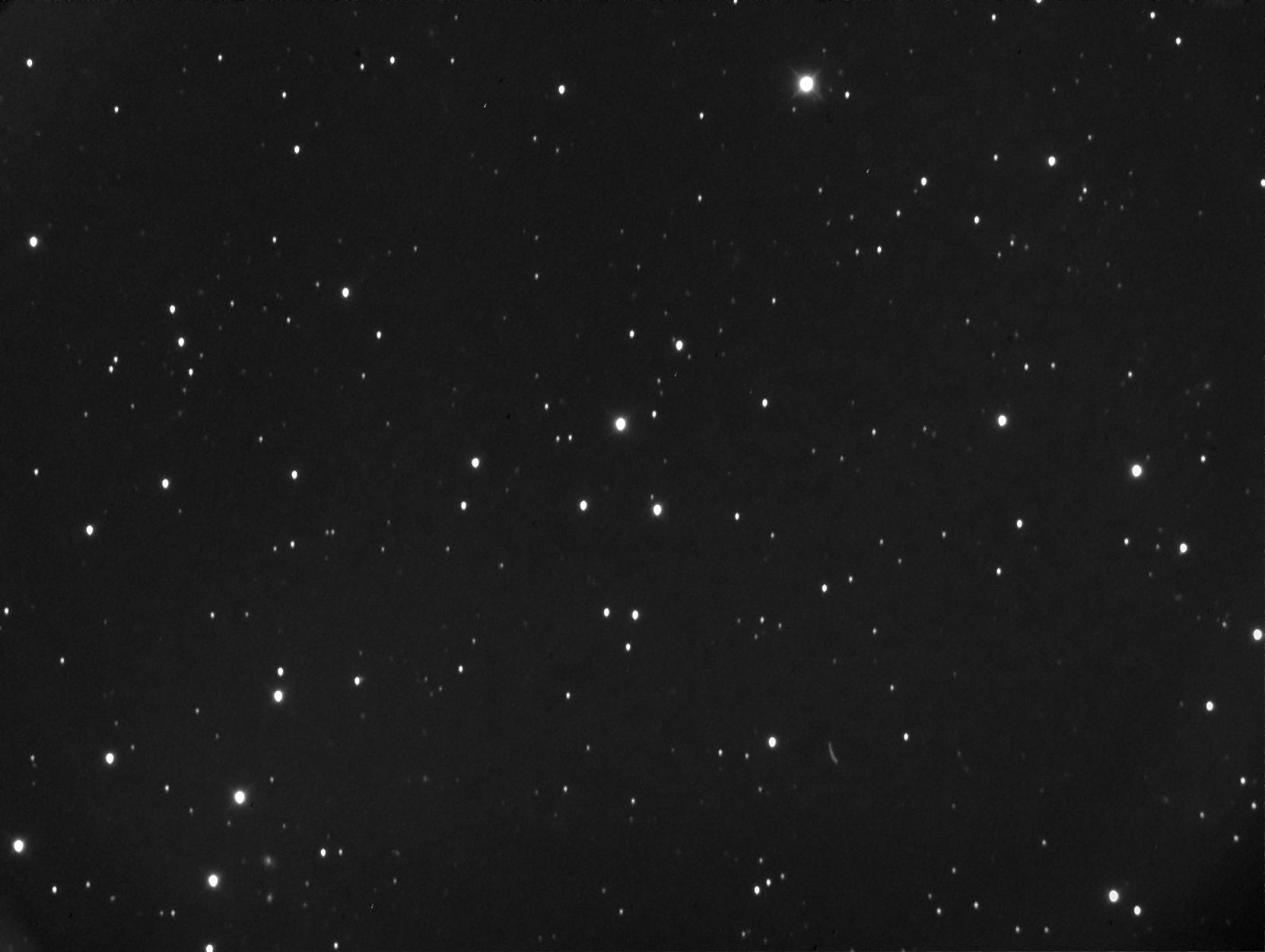 |
|
| Second image: binning 2x2, 23 subs of 200 sec each, Date: 2014-02-26 Time: from 20:49 - 22:09 UTC. | |
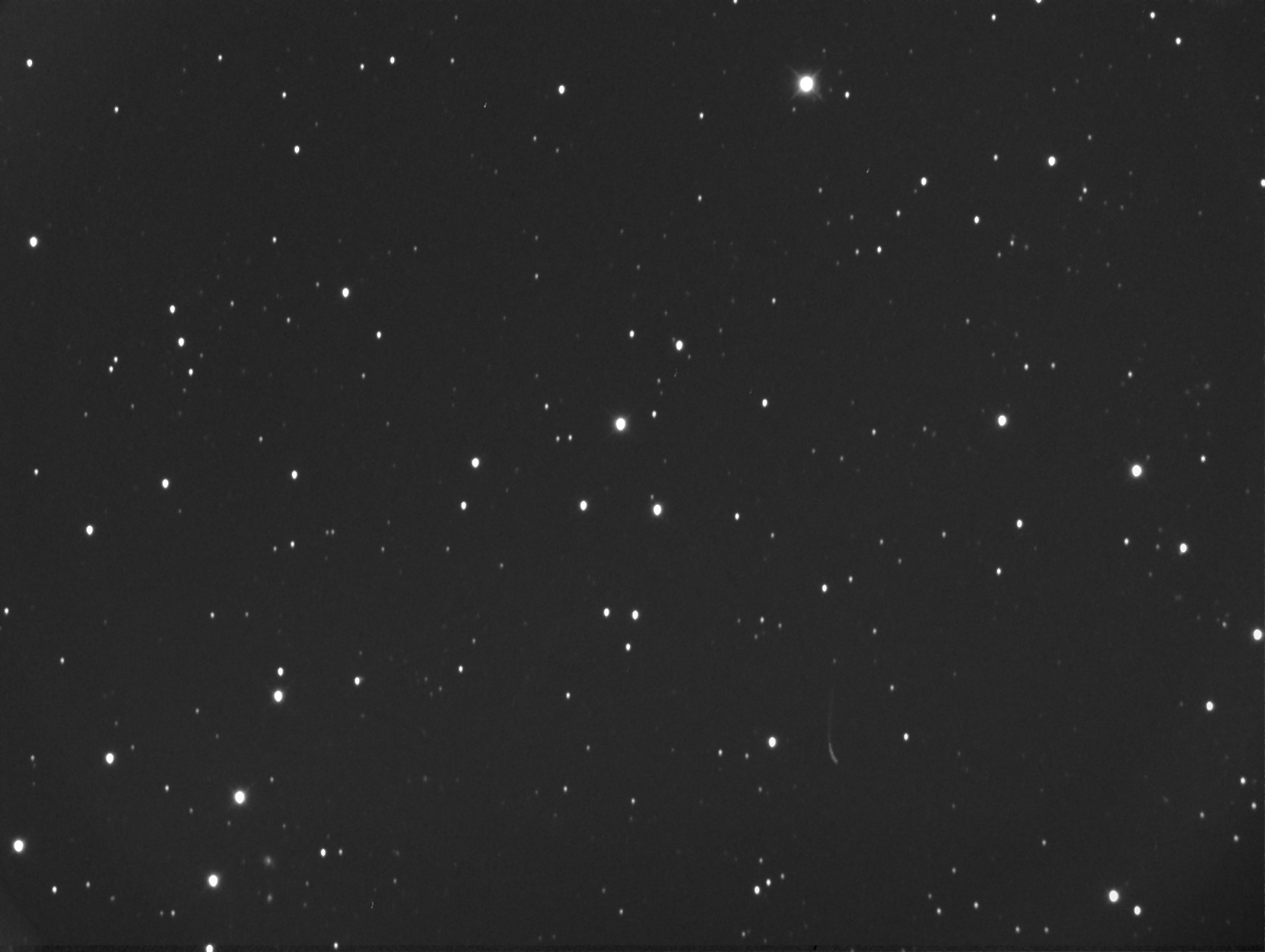 |
|
| Third image: combined picture of image 1 and 2. | |
| __ __ __ | |
| The copyright lies with the photographers/astronomers who took the pictures. | |
- Removed a total of (1) style text-align:center;
- Removed a total of (1) border attribute.
- Removed a total of (1) cellpadding attribute.
- Removed a total of (1) cellspacing attribute.








































 Sign in
Sign in
 Science & Technology
Science & Technology